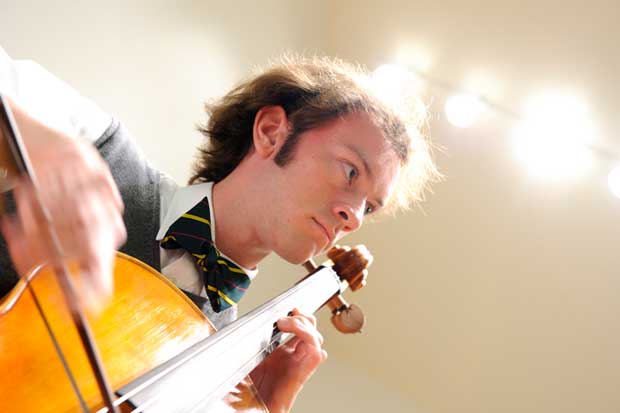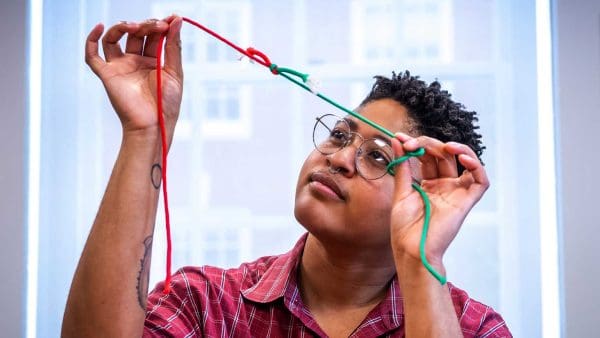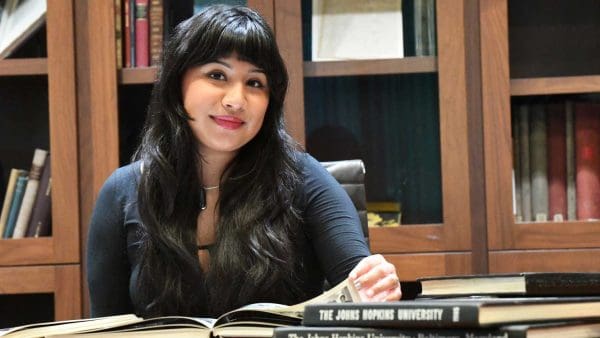In Amsterdam, Ben Swartz studied with two master cellists who take very different approaches to Bach’s Cello Suites.
Will Kirk / homewoodphoto.jhu.edu
J.S. Bach’s Cello Suites may be the most popular compositions for the instrument ever written, but their history is also the most enigmatic. “We play them at every audition,” says Ben Swartz ’12, “but there’s no authoritative transcription. It’s lost to the world.”
As Swartz explains it, although Bach likely composed the work around 1720, it wasn’t until 1925 that the suites, originally thought to be études, were recorded by cellist Pablo Casals, who found an edition in a Barcelona thrift store. It’s his romanticized interpretation that most cellists perform today. But is that what Bach intended?
Swartz, a double- degree student in history (Arts and Sciences) and cello (he’s a student of Peabody cellist Alison Wells), used his Woodrow Wilson Fellowship to spend six months in Amsterdam studying with two masters of the instrument, Anner Bylsma and Pieter Wispelwey. Both have different approaches to the Cello Suites. Bylsma, Swartz explains, takes a traditional approach to the composition and plays in the baroque style, even insisting on playing the numerous irregularities and blatantly wrong notes that appear in the closest thing to a period manuscript—a hand-written copy by Bach’s second wife, Anna Magdalena. Wispelwey, on the other hand, allows his baroque training to inform his performances but interprets the composition in a more contemporary way. “As a student cellist you’re pulled in these two different directions,” Swartz says. “The question is: How do we reconcile them?”
Swartz would study with each cellist once a week for several hours, playing the suites on a modern cello with steel strings with Wispelwey and a baroque cello strung with gut strings with Bylsma. Each set of strings gives the instrument a different sound. Also, since baroque music had its origins in dance, “it’s a question of the cellist knowing how the dances were danced physically, and then learning how they translate into physical gestures on the cello as you play them,” he says.
Ultimately, Swartz wasn’t after whether which interpretation of the Bach Suites is “right,” but how modern players can synthesize both into a historically informed and intensely personal performance—something Swartz hopes to continue to pursue professionally after he graduates.
In the meantime, he’s still ecstatic that he was able to study with two of the masters of an instrument he’s played since he was 5 years old.





